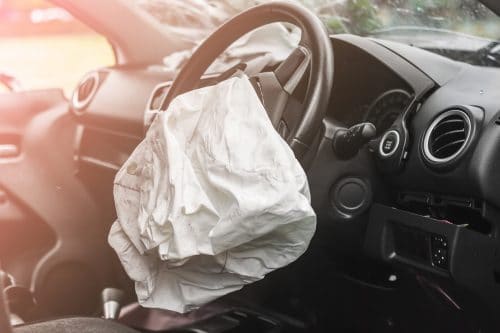
It is a reasonable assumption that when you buy a new vehicle, the safety features should protect you. The worst-case scenario should be that they fail to do so. Unfortunately, in the Takata airbags case, it became clear that a worse scenario is possible: These airbags killed people. That is according to wrongful death cases that were filed against the airbag manufacturers and, in some cases, automobile manufacturers.
The Facts of the Case
The airbags in question were manufactured by a Japanese company called Takata Corporation. They were used in both American and Japanese cars. The defective parts in the airbags included a canister of accelerant that is supposed to inflate the airbag in the case of an accident. However, these canisters were prone to overheating and exploding, which then sent shrapnel throughout the vehicle. It also failed to inflate properly when it was supposed to, which resulted in injuries that may not have occurred if the airbag had been in good shape.
Product Liability Cases for Vehicles
When a product liability claim is brought up for any type of defective item – including a car part – there are three categories it may fall into:
- Manufacturing. This happens if a material or process that was used in manufacturing is not sufficient to stand up to regular use. This could be a bolt that is supposed to hold together a vehicle frame being made too soft to handle the forces involved in driving.
- Design. If the product was designed in an unreasonably dangerous way, but was made of adequate materials, then it may be a case of design defect. One example is a steel clothing rack that has sharp points at the end of each bar.
- Warning. Some products are simply unsafe. For example, knives, fireworks, and motorbikes. The key is that the manufacturer must alert the potential user or future owner of the potential danger via warning. If they do not do so, then there may be a warning defect.
Do any of these three categories apply to your injury?
The Effect of Recalls
The Consumer Product Safety Commission, the auto manufacturer, or the National Highway Traffic Administration can all call for recalls. The owner of the recalled item is in charge of addressing the recall by having the item repaired or replaced. This is up to the manufacturer to provide, in most places.
However, if a recall was issued and you did not have the part repaired or replaced, the manufacturer may still be found at fault. This is a situation that can get complex and calls for the work of an experienced personal injury attorney. You can reach The Law Offices of Larry H. Parker at 800-333-0000 to learn more.



